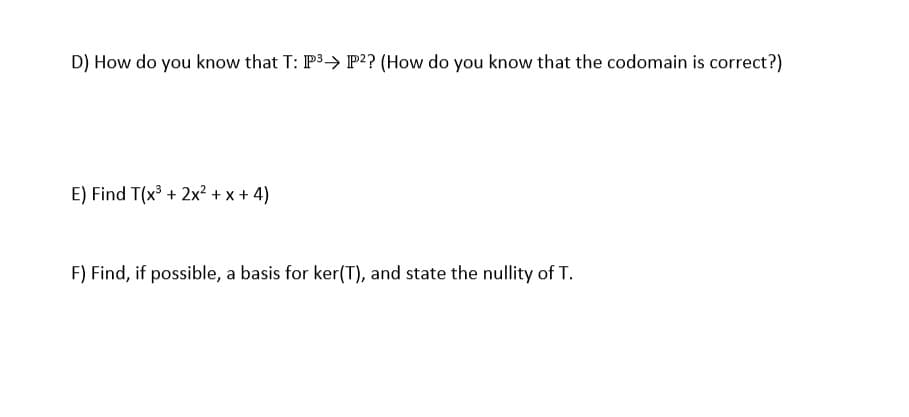D) How do you know that T: P3> P2? (How do you know that the codomain is correct?) E) Find T(x + 2x? + x + 4) F) Find, if possible, a basis for ker(T), and state the nullity of T.
D) How do you know that T: P3> P2? (How do you know that the codomain is correct?) E) Find T(x + 2x? + x + 4) F) Find, if possible, a basis for ker(T), and state the nullity of T.
Chapter5: Exponential And Logarithmic Functions
Section: Chapter Questions
Problem 39CT: The population P (in millions) of Texas from 2001 through 2014 can be approximated by the model...
Related questions
Question

Transcribed Image Text:D) How do you know that T: P3> P?? (How do you know that the codomain is correct?)
E) Find T(x³ + 2x² + x + 4)
F) Find, if possible, a basis for ker(T), and state the nullity of T.

Transcribed Image Text:Define T: P3> P2 via T(p(x)) =p'(x) – x p"(x).
Expert Solution
Step 1
Given,
(D) p(x) is a polynomial at most of degree 3.
p'(x) is a polynomial at most of degree 2 and xp"(x) is a plynomial at most of degree 2.
is of degree at most 2
Therefore, .
Hence, we can say given codomain is correct.
Trending now
This is a popular solution!
Step by step
Solved in 3 steps

Knowledge Booster
Learn more about
Need a deep-dive on the concept behind this application? Look no further. Learn more about this topic, advanced-math and related others by exploring similar questions and additional content below.Recommended textbooks for you

